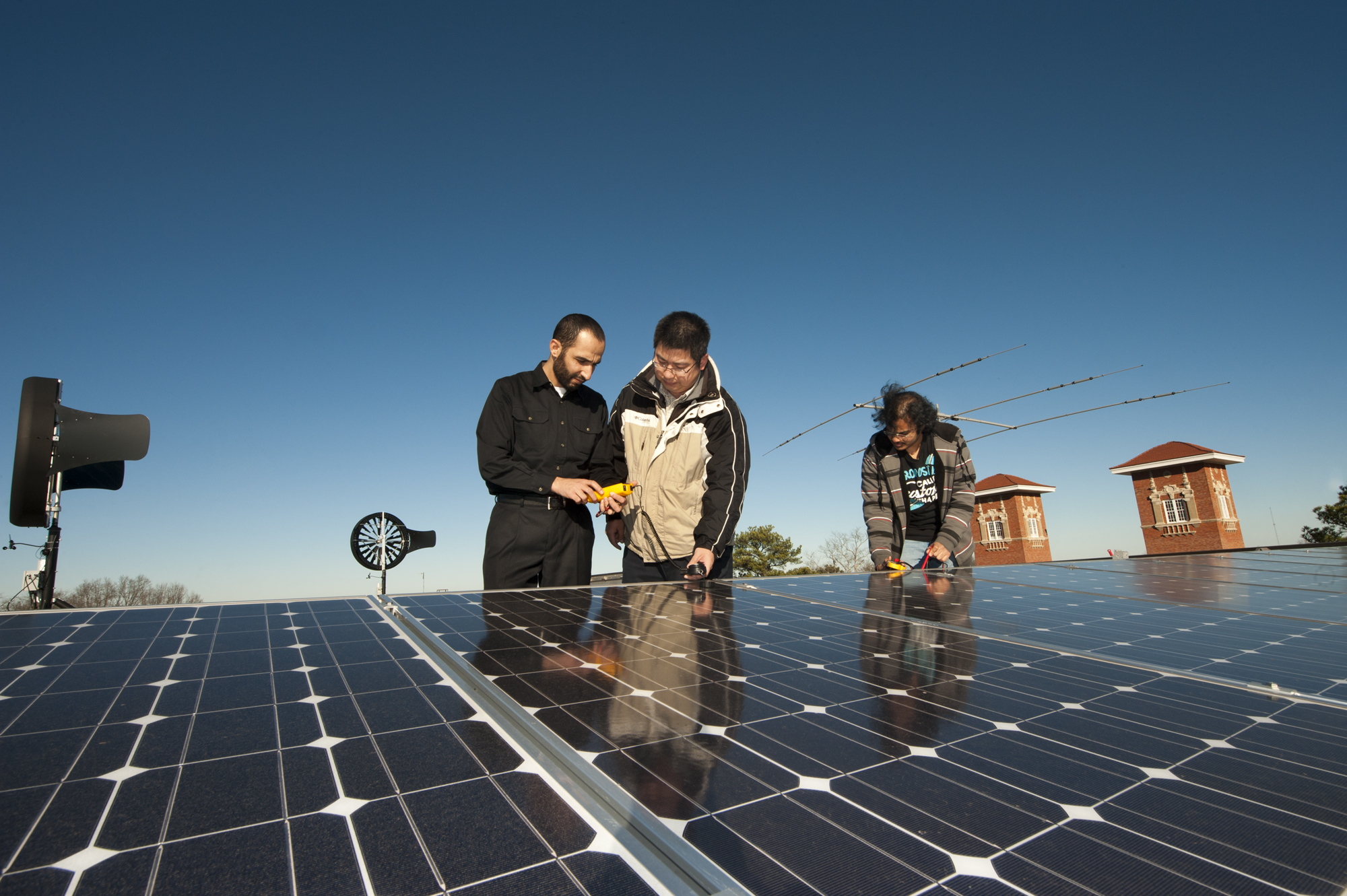Contact: Leah Barbour

Photo by: Megan Bean
There's a new way to farm at Mississippi State University, and the harvest yields renewable energy and teaches a new generation of students how to harness it for practical use.
MSU's energy farm consists of 24 solar panels and two wind turbines on top of the Simrall Electrical and Computer Engineering Building on the east side of campus. Under the leadership of Yong Fu, assistant professor in the electrical and computer engineering department, students have learned how to choose the appropriate equipment, figure out how it works and install, connect and operate it.
Two MSU graduate students, doctoral candidate Saher Albatran of Jordan and master's candidate Chiranjeevi Madvesh of India, have been part of the energy farm since it was conceptualized in early 2012. The farm is part of Fu's renewable energy integration course, which teaches students about harvesting, converting, operating, planning and marketing various renewable energy resources, including wind and solar energies.
The course allowed Albatran and Madvesh to become leaders in understanding the variable and sustainable attributes of renewable energy. Albatran headed the wind turbine project, while Madvesh spearheaded the solar panel initiative.
"We had to do all the mechanical-, civil-, electrical- and software-related work to make it successful," Madvesh said. "Today, we are feeding the energy back to the grid. The satisfaction we got by working on this project and the smiles on the faces of the team members are priceless."
Fu said students in his class explore how to connect wind and solar energies to a grid.
"If you show them the real-world application, that gives them understanding," he said. "The students enjoy it; sometimes I will teach my class in the lab. They work together to get the first-hand experience."
By choosing, installing and connecting the equipment, students get the chance not just to see the hardware work, but they also are able to ask relevant questions about application, Albatran said.
Overall, he said the experience has been very exciting work for him and has reinforced his leadership skills.
"I learned how to manage and how to divide the work among the students. Also, I learned how to make sure that all of them are ready to do the work, and if I did something alone, how to keep them in contact so they know all the details," Albatran said. "Otherwise, the work flow could go in an unexpected direction."
The mechanical and civil engineering work necessary to installing and connecting the renewable energies to the grid was a positive complement to the electrical engineering necessary to bring the project to fruition, Albatran and Madvesh agreed.
In addition to students researching, installing and connecting the solar panels and wind turbines, they are also collecting data, including energy generated and phase voltages and currents, Madvesh said.
"Students even worked on data analysis and were able to find out things which can really help to improve the present capacity of power delivery," he said.
Learning about renewable energies is one thing, Fu said, but actually implementing them is fostering the kind of learning that will benefit students in their careers.
"On the whole, the project was absolutely amazing, definitely one of my best experiences. It's a good achievement in a very short duration of time," Madvesh said. "I thank Dr. Fu and the department of electrical and computer engineering for giving me this opportunity."
MSU's energy farm is supported by the state Department of Energy Smart Grid Education and Workforce Training Project.